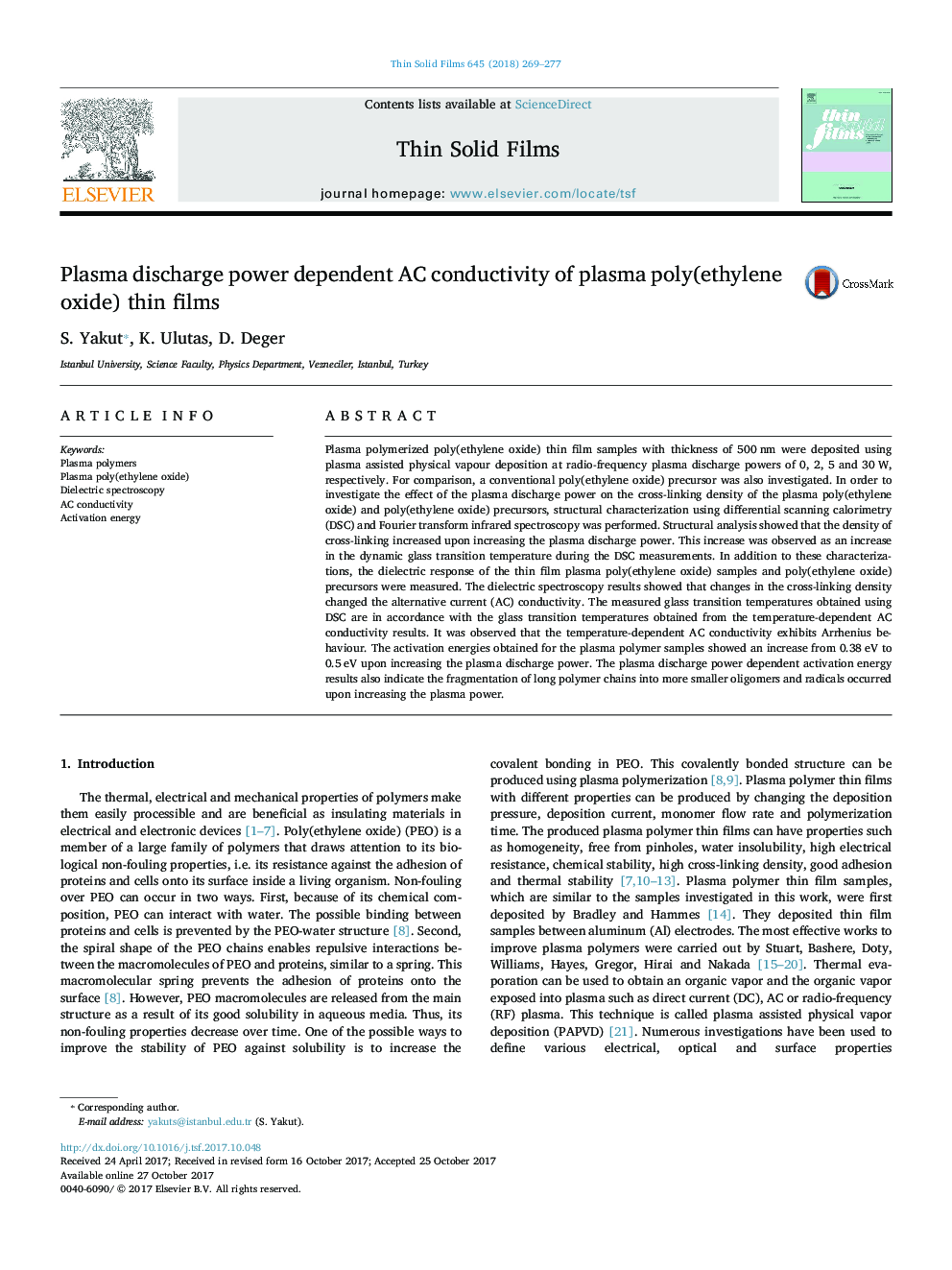| Article ID | Journal | Published Year | Pages | File Type |
|---|---|---|---|---|
| 8033163 | Thin Solid Films | 2018 | 9 Pages |
Abstract
Plasma polymerized poly(ethylene oxide) thin film samples with thickness of 500Â nm were deposited using plasma assisted physical vapour deposition at radio-frequency plasma discharge powers of 0, 2, 5 and 30Â W, respectively. For comparison, a conventional poly(ethylene oxide) precursor was also investigated. In order to investigate the effect of the plasma discharge power on the cross-linking density of the plasma poly(ethylene oxide) and poly(ethylene oxide) precursors, structural characterization using differential scanning calorimetry (DSC) and Fourier transform infrared spectroscopy was performed. Structural analysis showed that the density of cross-linking increased upon increasing the plasma discharge power. This increase was observed as an increase in the dynamic glass transition temperature during the DSC measurements. In addition to these characterizations, the dielectric response of the thin film plasma poly(ethylene oxide) samples and poly(ethylene oxide) precursors were measured. The dielectric spectroscopy results showed that changes in the cross-linking density changed the alternative current (AC) conductivity. The measured glass transition temperatures obtained using DSC are in accordance with the glass transition temperatures obtained from the temperature-dependent AC conductivity results. It was observed that the temperature-dependent AC conductivity exhibits Arrhenius behaviour. The activation energies obtained for the plasma polymer samples showed an increase from 0.38Â eV to 0.5Â eV upon increasing the plasma discharge power. The plasma discharge power dependent activation energy results also indicate the fragmentation of long polymer chains into more smaller oligomers and radicals occurred upon increasing the plasma power.
Related Topics
Physical Sciences and Engineering
Materials Science
Nanotechnology
Authors
S. Yakut, K. Ulutas, D. Deger,
